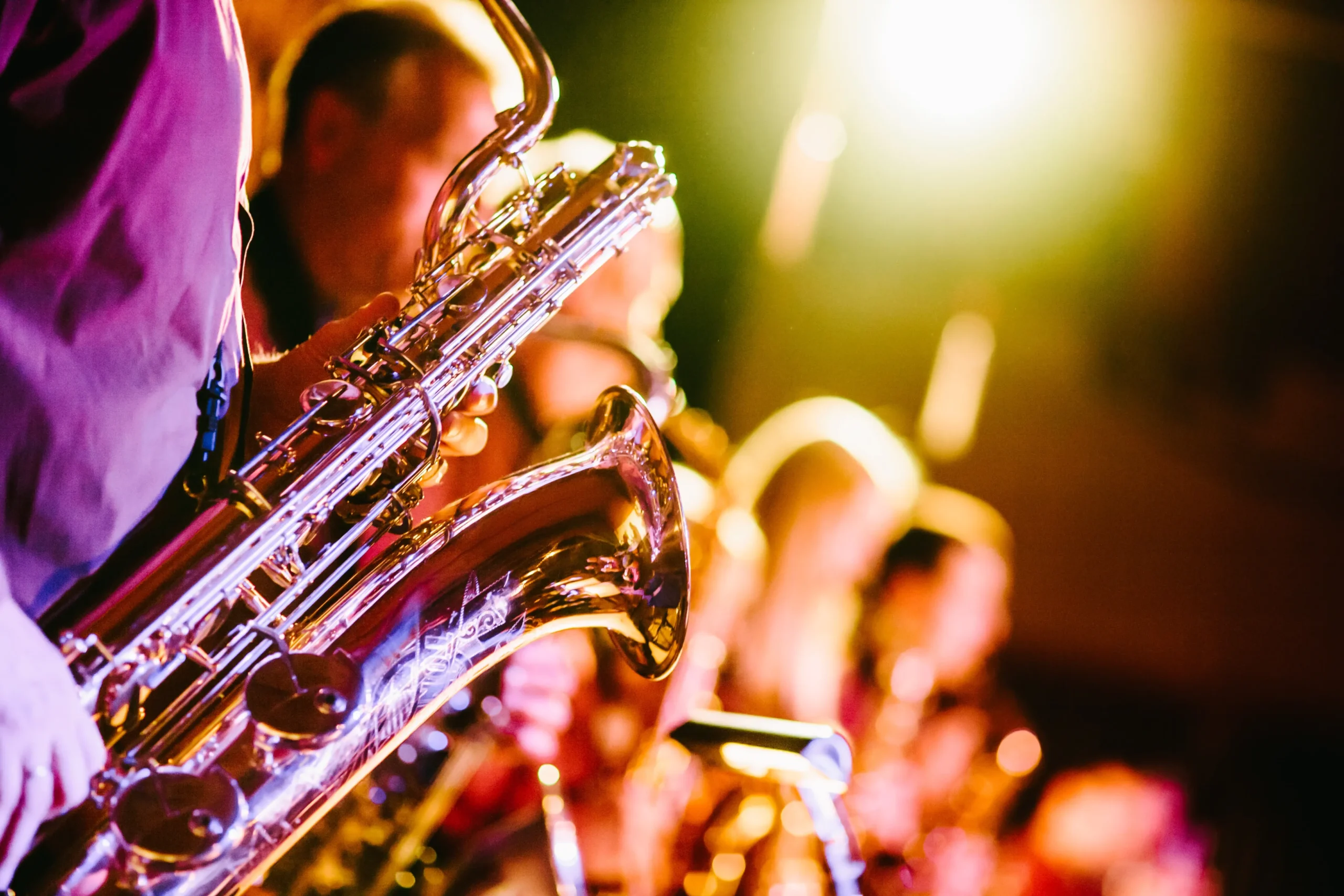
Table of Contents
What is the meaning of jazz music?
Examine the aspects and traits that make up jazz music, including as the rhythm section, call and response, improvisation, swing, blue notes, expressive methods, intricate harmonies, and influences. Discover the special fusion of spontaneity, originality, and musicianship that gives jazz music its vibrancy and ongoing evolution.

What Makes Jazz Music Unique?
For more than a century, audiences have been enthralled by the genre of jazz music. It stands out from other genres thanks to its unique flair and improvisational approach. We shall examine the components and traits that characterize jazz music in this essay.
1. Syncopation and Swing:
The use of swing and syncopation in jazz music is one of its distinguishing characteristics. The intentional shifting of accents to off-beats, which results in a rhythmic tension and unpredictability, is referred to as syncopation. Jazz music has a distinct taste from this rhythmic intricacy, which also makes it readily recognizable. Jazz, on the other hand, has an irresistible groove because of the rhythmic sense of swing. It uses a little focus on the off-beats to produce a swinging rhythm and a sensation of forward motion.
2. Improvisation:
Jazz music’s reliance on improvisation is arguably its most well-known feature. The capacity of jazz performers to compose on-the-spot melodies and solos, sometimes in reaction to the music being performed, is well recognized. Because improvisational elements foster limitless creativity and personalized expression, every performance is fascinating and one-of-a-kind. Jazz music has an air of unpredictability and freedom because of improvisation.
3. Blue Notes and Expressive Techniques:
“Blue notes,” which are microtonal pitches that contribute a distinctly bluesy feel, are a defining feature of jazz music. The emotional richness and depth of the song are further enhanced by the expressive methods used to play these notes, which frequently include bends, slides, and vibrato. These expressive methods are employed by jazz artists to communicate their feelings and establish a more meaningful connection with the audience.
4. Complex Harmonies and Chord Progressions:
Jazz music is well known for its intricate chord progressions and harmonies. Jazz performers commonly employ extended chords, such as seventh, ninth, and thirteenth chords, in contrast to other genres that frequently rely on simple triads. There are many harmonic combinations possible thanks to these complex harmonies, which provide a rich and elegant sound. Unconventional chord progressions are a common tool used by jazz performers to bring mystery and surprise to their works.
5. Call and Response:
Jazz music frequently uses the melodic method of call and answer. It entails back-and-forth communication between a soloist and the other members of the ensemble or between various instruments. A sense of dialogue and discussion is created inside the music by this dynamic interaction, which enables artists to have musical exchanges and build upon each other’s ideas. Jazz music becomes more participatory and engaging when call and response is used.
6. Rhythm Section and Improvised Accompaniment:
The rhythm section is essential to jazz music because it provides a strong framework for improvisation. Generally, the instruments in the rhythm section include the piano, guitar, bass, and drums. Together, these instruments provide the fundamental groove, harmony, and rhythm of the song. The rhythm section frequently improvises to match the soloist’s improvisations, resulting in a lively and participatory musical dialogue.
7. Influences and Cross-Pollination:
Other musical styles have always impacted and been affected by jazz music. Jazz has always included aspects from other musical genres, such as blues, Latin American music, African rhythms, and European classical music. Jazz music is rich and varied, always pushing the envelope and changing due to the cross-pollination of musical forms and influences.
In summary, the characteristics of jazz music include call and response, swing, improvisation, blue notes, expressive approaches, intricate harmonies, rhythm section, influences, and cross-pollination with other genres. Together, these components give rise to a dynamic, expressive, and ever-evolving genre. Jazz music’s distinctive fusion of originality, spontaneity, and musicianship never fails to enthrall listeners throughout the globe.
Check out this blog related to this blog
Check our featured blog
What Defines Hip Hop Music?
Can AI Replace Human Musicians? Exploring the Future of Music Creation
Can AI replace human artists? Artificial intelligence in music Can AI Replace Human Musicians? Introduction Artificial intelligence in music (AI) is swiftly changing multiple industries, and the music sector is no different. The incorporation of AI into music production, songwriting, and live performance has opened the door to inventive practices and technologies that question conventional…
How to Use Vocal Compressor?
How to Use Vocal Compressor? Vocal compression is an important step in music production for creating a refined sound. This article covers everything from how to set up your compressor and dial in the optimum settings to advanced techniques like as parallel and side-chain compression. Learn how to control dynamic range, establish voice presence, and…
Difference Between Home Studio and Professional Studio
Difference Between Home Studio and Professional Studio Discover the fundamental distinctions between home and professional audio production facilities. Learn about each type of studio’s equipment, technology, and expenses, as well as the benefits and drawbacks. Whether you’re a hobbyist or a professional, this guide will help you select the best configuration for your requirements. Introduction…

Leave a Reply